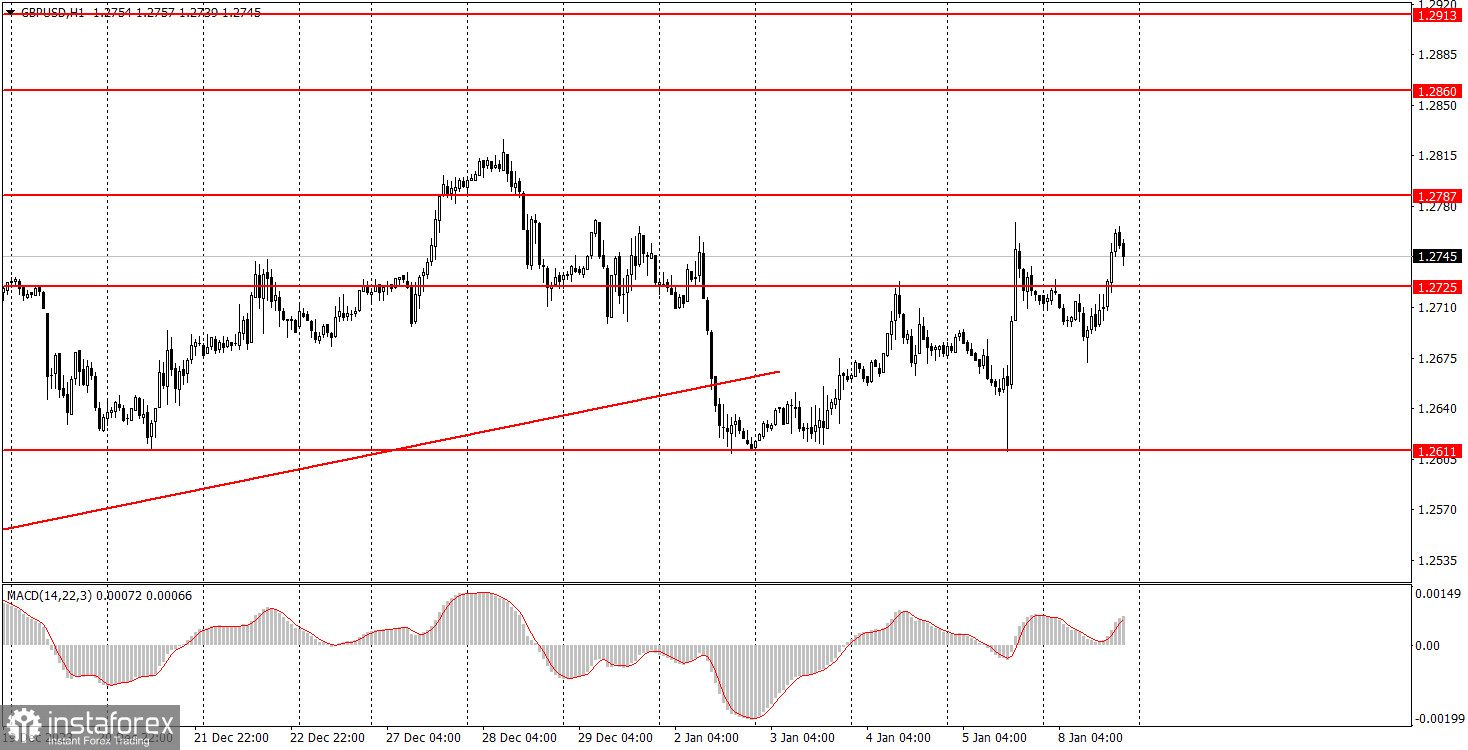Analysis of macroeconomic reports:

There are very few macroeconomic events scheduled for Tuesday, as well as for the entire week, and none of them are considered important. On Tuesday, we can highlight reports on industrial production in Germany and the unemployment rate in the European Union. However, both of these reports are unlikely to trigger a significant market reaction. Trading was weak on Monday, but the market may still be influenced by Friday's data. We don't see any reason for both pairs to trade actively or establish a trend on Tuesday. The euro will likely trade in a sideways channel, while the pound may continue to fluctuate up and down, remaining near its 5-month highs.
Analysis of fundamental events:

There are no significant fundamental events to highlight on Tuesday either. Federal Reserve official Barr and European Central Bank representative Villeroy are scheduled to speak. It is currently very difficult to expect any important statements from both of them, as they themselves do not know when central bank interest rates will start to fall. Everything will depend on inflation. There is no clear plan.
General conclusion:
There are no important events or reports lined up for Tuesday. We believe that you shouldn't expect significant movements from both pairs, but it is important to remember that the currency pairs can show distinct movements even when fundamentals and macroeconomics are not strong. For instance, on Monday, the pound has shown that it can trade and rise under any conditions. Therefore, we will need to rely on technical analysis.
Basic rules of a trading system:
1) Signal strength is determined by the time taken for its formation (either a bounce or level breach). A shorter formation time indicates a stronger signal.
2) If two or more trades around a certain level are initiated based on false signals, subsequent signals from that level should be disregarded.
3) In a flat market, any currency pair can produce multiple false signals or none at all. In any case, the flat trend is not the best condition for trading.
4) Trading activities are confined between the onset of the European session and mid-way through the U.S. session, after which all open trades should be manually closed.
5) On the 30-minute timeframe, trades based on MACD signals are only advisable amidst substantial volatility and an established trend, confirmed either by a trendline or trend channel.
6) If two levels lie closely together (ranging from 5 to 15 pips apart), they should be considered as a support or resistance zone.
How to read charts:
Support and Resistance price levels can serve as targets when buying or selling. You can place Take Profit levels near them.
Red lines represent channels or trend lines, depicting the current market trend and indicating the preferable trading direction.
The MACD(14,22,3) indicator, encompassing both the histogram and signal line, acts as an auxiliary tool and can also be used as a signal source.
Significant speeches and reports (always noted in the news calendar) can profoundly influence the price dynamics. Hence, trading during their release calls for heightened caution. It may be reasonable to exit the market to prevent abrupt price reversals against the prevailing trend.
Beginners should always remember that not every trade will yield profit. Establishing a clear strategy coupled with sound money management is the cornerstone of sustained trading success.





















